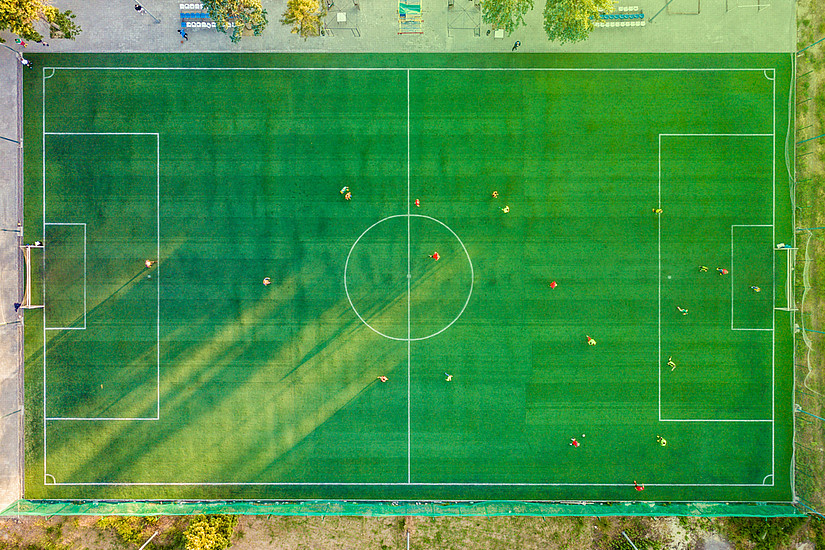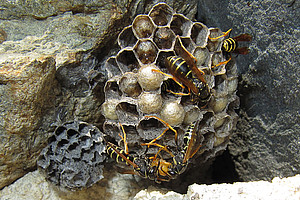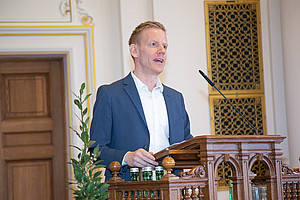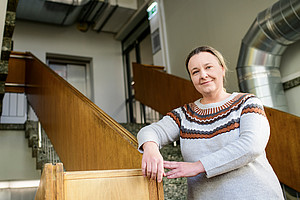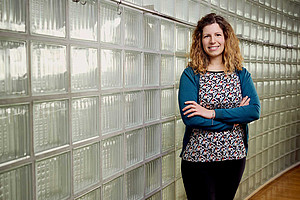Everyday objects, a tin can for instance, may be put to use in many different ways. A classic creativity test known as an “unusual uses test” records what ideas a respondent comes up with in this context. Although the test is well-proven and easy to implement, there is one catch: it bears no relation to daily life. “Should I do well at this test, what does this imply anyway about my creativity in specific situations in real life?” is a criticism levelled by the psychologist and neuroscientist Andreas Fink from the Institute of Psychology at the University of Graz, where the research field of creativity and neuroscience has long been pursued. In co-operation with Daniel Memmert from the German Sports University Cologne, the researcher had the idea of measuring the brain activity of soccer players while they think up a creative move for the game during play. In the research project Neuronal mechanisms of creative solutions in complex environments, which was funded by the Austrian Science Fund FWF and the German Research Foundation (DFG), the partners developed new, specific test tasks to make the creativity potential in soccer measurable.
Extended understanding of creativity
“Today, soccer players are in very good shape, and there are hardly any differences between them in terms of fitness and physical condition. Therefore, creativity is very important for them to gain a competitive edge. It's all about developing and successfully implementing original, surprising and novel solutions,” explains Fink. If creativity is to be observed, researchers often use methods such as electroencephalography (EEG), which measures and graphically represents electrical activity in the brain, and functional magnetic resonance imaging (fMRI), which visualises tissue blood flow.
When a test person thinks of a creative solution for a problem, characteristic brain activities occur. It has been shown, for instance, that increases in the electrical activity of the brain in the frequency range between 8 and 12 hertz, also known as “EEG alpha activity”, play a major role in creativity. In everyday life this means a person isolates him- or herself from disturbing influences, being highly focused with attention directed inward. “In soccer, however, it is enormously important to be aware of everything going on around you and to incorporate it in your thought processes. It means you need to direct your focus in the opposite direction. That came as a surprise to us,” says the researcher. Creativity seems to activate specific activation patterns in the brain depending on the situation someone is confronted with – it follows from this that the increases in EEG alpha activity are not the only basis.
Complex tasks in the scanner
When formulating statements about real life, statements having so-called “ecological validity”, Fink ventured to look for new ways to explore creativity in areas closer to everyday life and investigate them in a scanner. A total of four studies were conducted with short video sequences of game situations being shown to the test persons and frozen after a maximum of 12 seconds. Approximately 150 test subjects from amateur soccer to the women's national soccer league were asked to imagine what move they would make in that situation and then describe it verbally. Using fMRI and EEG, the researchers analysed thinking time and compared how brain activity differed between creative and less creative ideas. In the run-up to the test, it was important for the researcher to carefully consider which tasks and how many of them were suitable or how the test persons had to be prepped. “The situation in the lab is a far cry from the usual circumstances where you are creative. You lie on your back in the scanner, your head is immobilised to ensure clear images, and then you have to be creative at the click of a button,” says the psychologist, explaining the challenge involved in creativity research.
Creativity is a factor of success
The studies showed that the specific thought processes activated depend on the respective realm of creativity. In soccer, this involves high proficiency in visual information processing, i.e. being able to recognise and assess other players and imminent moves, or to be able to visualise movement sequences in your mind; the researcher found no differences between women and men in this regard. The ability to engage in mental simulation, i.e. to mentally play through possible solutions and order one’s thoughts, to suppress typical thought patterns and to be able to question obvious solutions, as well as to evaluate one's own ideas, were basic principles of creativity, which generally involves a whole number of thought processes working together.
Having enjoyed significant progress in recent years, creativity research is now increasingly concerned with the search for explanations. “In order to investigate the complex phenomena in a meaningful way, disciplines would have to collaborate much more closely. Nevertheless, we will probably never be able to fully decipher what happens in the brain,” notes Fink. What counts in soccer is not merely technique, experience, knowledge and physical strength, but also creativity. How good someone actually is at that can now be tested realistically in the laboratory by means of the new test tasks.
More informations http://scilog.fwf.ac.at/en
